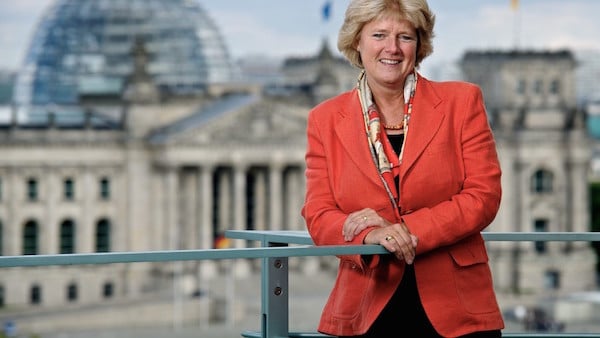Art World
Germany Revises Controversial Cultural Heritage Protection Law
Will Baselitz approve of the new proposal?

Will Baselitz approve of the new proposal?

by
Henri Neuendorf


Art experts have criticized German Culture Minister Monika Grütters’ planned Cultural Property Protection Act.
Photo: Caro/Waechter via FAZ
Following massive protests from gallerists and collectors, the German Culture Minister Monika Grütters presented a revised version of the controversial amendment of Germany’s cultural protection legislation.
The first draft of the proposed changes featured a number of highly contentious clauses that have led to widespread outrage across Germany. The first proposal stipulated, among other things, a tightening of export restrictions to prevent the sale of nationally significant cultural goods outside of Germany.
Art professionals warned that the ratification of the proposed changes would have catastrophic consequences on the competitiveness of the German cultural industry.

Georg Baselitz and Gerhard Richter spoke out against the proposed amendment.
Photo: Focus
German star artist Georg Baselitz withdrew all of his loaned works from German museums in protest, and fellow artist Gerhard Richter threatened to do the same should the government accept the new proposal.
The new proposal, which was published online on Tuesday September 15, contained several alterations aimed at appeasing incensed German art professionals.
According to a statement from the German cultural ministry, artworks older than 50 years and valued at €150,000 or more will require an export permit if they are to be exported outside of the European Union.
Artworks traveling within the EU require an export permit if the works are older than 70 years and valued at over €300,000. The statement emphasized that the entire contemporary art segment is unaffected by these requirements.

The German legal framework has hindered art trade.
Photo: Wallcoo
In addition, works by living artists may only be added to the list of nationally significant cultural goods with the artist’s permission.
“The cultural nation Germany must continue to have the possibility of preserving nationally valuable cultural assets with identity-forming significance,” Grütters said in the statement.
“We are talking about legal regulations that have applied for 60 years and have been widely accepted. The definition of what constitutes a nationally valuable cultural item will continue to be evaluated by experts to which museums, dealers, and collectors all belong,” she assured.
She concluded by saying, “Ultimately it comes down to very few unique, culturally self asserting and identity forming major artworks that are classified as nationally valuable—it amounts to a negligibly small part of the overall artistic and cultural heritage in Germany.”
Grütters hopes that, after another round of voting, the bill will be passed before the end of October, and the new laws be put into effect at the beginning of 2016.
Related stories:
German Artists Force Revision of Controversial Cultural Heritage Law
Proposed Law Regulating Art Sales Would Destroy German Art Market Experts Say
What’s Stopping the German Art Market from Competing Internationally?